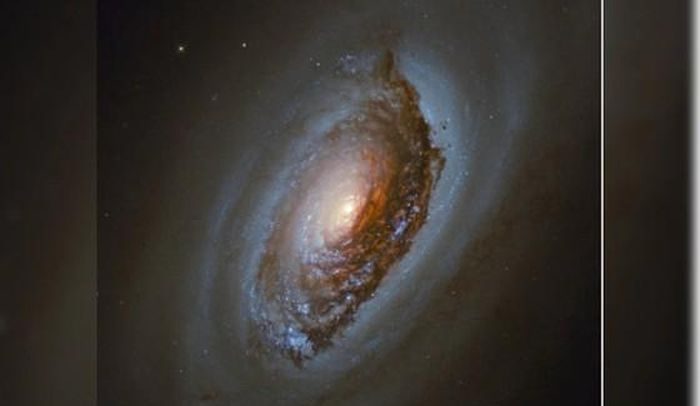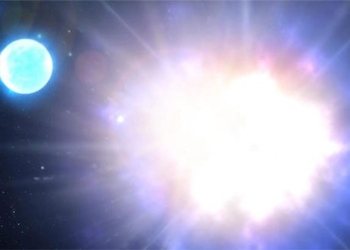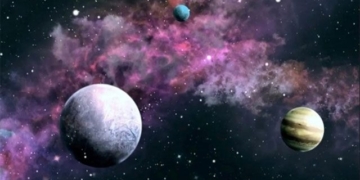The National Aeronautics and Space Administration (NASA) has recently released a stunning new image of Messier 64, a spiral galaxy located approximately 17 million light-years away from Earth in the constellation Coma Berenices.

Messier 64 is nicknamed the “Black Eye Galaxy” due to the dark dust lane obscuring its central region.
The image, captured by the Hubble Space Telescope, reveals the galaxy’s intricate structure with unprecedented detail. Messier 64 is also known as the “Black Eye Galaxy” or “Evil Eye Galaxy” because of the dark dust lane that hides its core.
This dark dust lane contains dense gas and dust that absorbs light from the bright bulge at the center of the galaxy, creating the illusion of an eye or dark pupil at its core. The dust is also believed to be an active star-forming region, as the dense gas and dust provide a breeding ground for new stars.
The image also highlights the galaxy’s sprawling spiral arms, dotted with regions of blue light. These blue areas are inhabited by young, hot stars that are still in the process of forming. Additionally, the galaxy is surrounded by a faint halo of stars, thought to be remnants of smaller galaxies that Messier 64 has “devoured” over billions of years.
This new image of Messier 64 serves as a reminder of the vastness and beauty of the universe. It also showcases the power of the Hubble Space Telescope, which continues to make groundbreaking discoveries after more than 30 years of operation.





















































